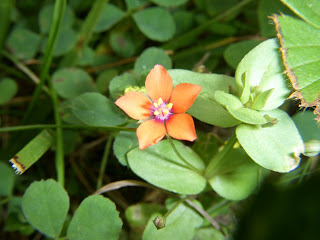On July 15, after driving from Broomfield to Avon, Colorado the day before, we left our lodge early in the morning in anticipation of a long day of arduous hiking at Missouri Lakes in Holy Cross Wilderness. Our morning started off on the wrong track, literally, as we turned the wrong way on I-70 from Avon and had to turn around. Oh well... we had an early start, so we were still in good shape for the expected 8 hour hike from montane forest through subalpine and into the alpine before heading back down. After turning off of Highway 24, we had another 30 minutes or so of driving up gravel roads to the Missouri Lakes trail head. Approximately 3/4 of a mile from the trail head, Eric noticed the smell of maple syrup, and then he saw steam coming from under the hood of his car. When we opened the hood, there was antifreeze spewing everywhere.
Not being much of "car people," we weren't sure what to do. We were stranded on a mountain with no cell phone service. The good news was that it was 8 AM, so we had all day to figure out what to do, and there are much worse places to be stranded...
.JPG)
So we waited. A few hikers driving up the mountain drove by and asked if they could help, but none of them were "car people" either. Then two guys driving down the mountain, who had been hiking and camping at Missouri Lakes for several days, stopped and offered to help. They were heading towards Leadville, 45 minutes away, and offered to drive us to town. Eric didn't want to leave his car there unattended, so he offered to go to Leadville, leaving Lindsay and me at the car. Once Eric left, Lindsay and I had at least an hour and a half to burn, so I ventured off botanizing. It was then and there that I first saw Colorado's State Flower, Colorado Blue Columbine (Aquilegia coerulea). We saw quite a bit of this conspicuous, showy plant during our trip, but I wouldn't have found this individual had we not broken down.
When it is at peak bloom, the sepals (the blue parts) are more spreading than they are in this photo
About 30 minutes later, two guys driving up the mountain stopped to ask if we needed help. I told them, "Not unless you're mechanics," and explained that Eric had headed to town and intended to have a tow truck pick up the car. They drove to the front of our vehicle, got out, and, to our astonishment, said, "Actually, we are mechanics." What are the chances? Both guys just happened to work for Beaver Creek Ski Resort near Vail, repairing vehicles and equipment! Within 45 minutes, they had determined that there was a split in the radiator bipass hose, had taken off the hose and taped the split with electrical tape, and had put the hose back on. Amazing. And they would accept no form of compensation... they said they just didn't want to leave anyone stranded. We are forever grateful.
Lindsay and I started driving back down the mountain towards Highway 24, stopping to look for birds and to check the hose periodically. Along our drive, we saw the only Western Scrub Jay of our trip. The electrical tape seemed to be holding up, but we didn't know where Eric was, and we didn't want to start driving to Leadville and have him pass us on his way back to Missouri Lakes. We stopped at Highway 24 so I could try to call Eric. I still didn't really have cell phone reception, so I started to walk up Highway 24. There was one spot along the road where I had mediocre reception; if I went any higher up the incline, I lost reception; any lower, I lost reception. I called Eric, and during our broken phone call, heard him say "nothing is working out... Lisa is coming to pick us up... if you can, get to Leadville." We decided to head to Leadville.
About 25 minutes later, Lindsay was able to call Eric, and we found out where to meet him. Upon meeting up with Eric, we found out that it would have cost ~$600 to tow the car to Leadville. We were able to take the car to a local shop, where it was fixed for $64 in an hour while we ate lunch. We were back on the road by around 1 PM, and instead of going back to Missouri Lakes, went to Independence Pass where we saw an amazing subalpine/alpine community that we had not intended to visit. I'll post photos from Independence Pass at some point. We were still able to go to Missouri Lakes the following day, so we really only lost half a day due to our detour.






















